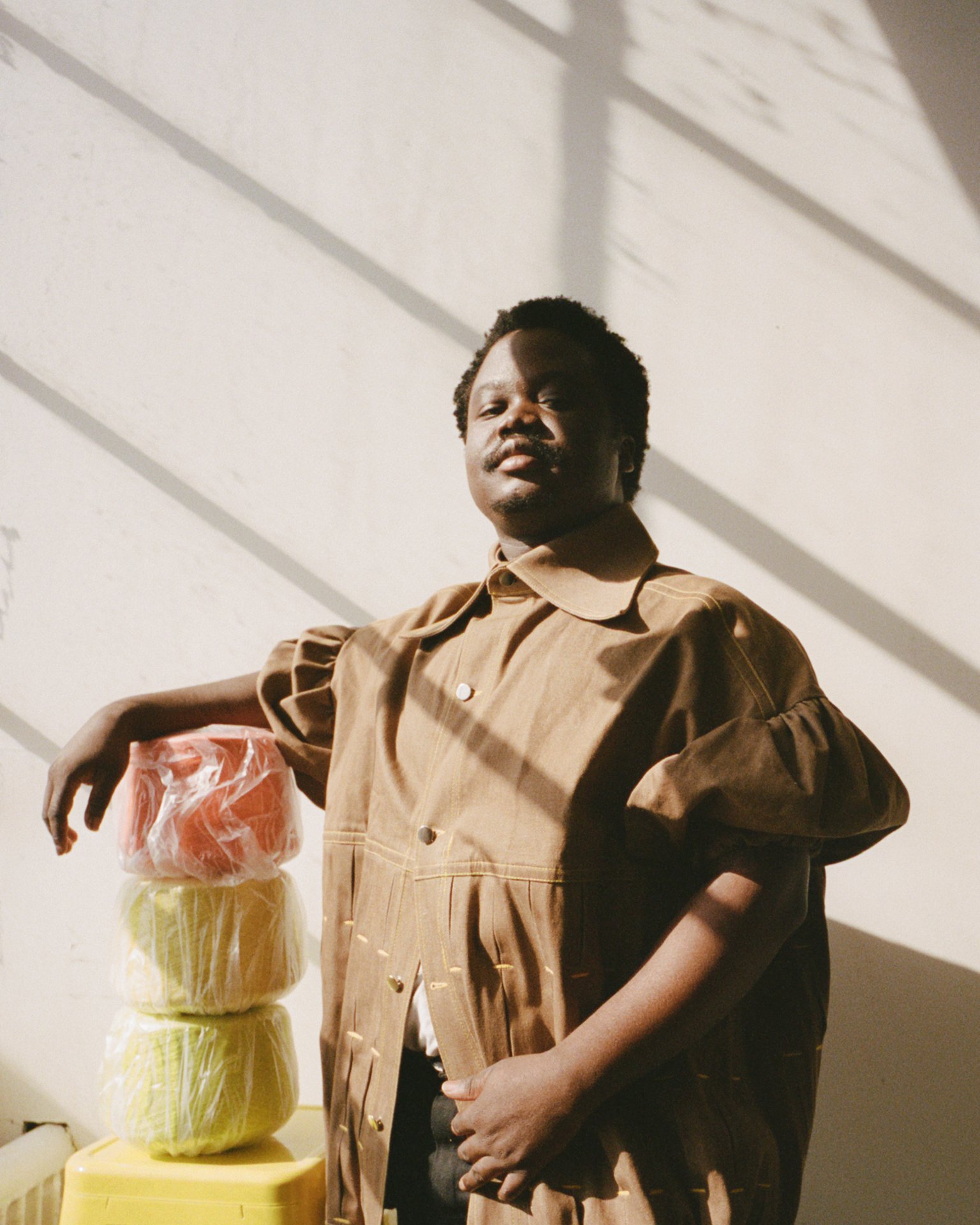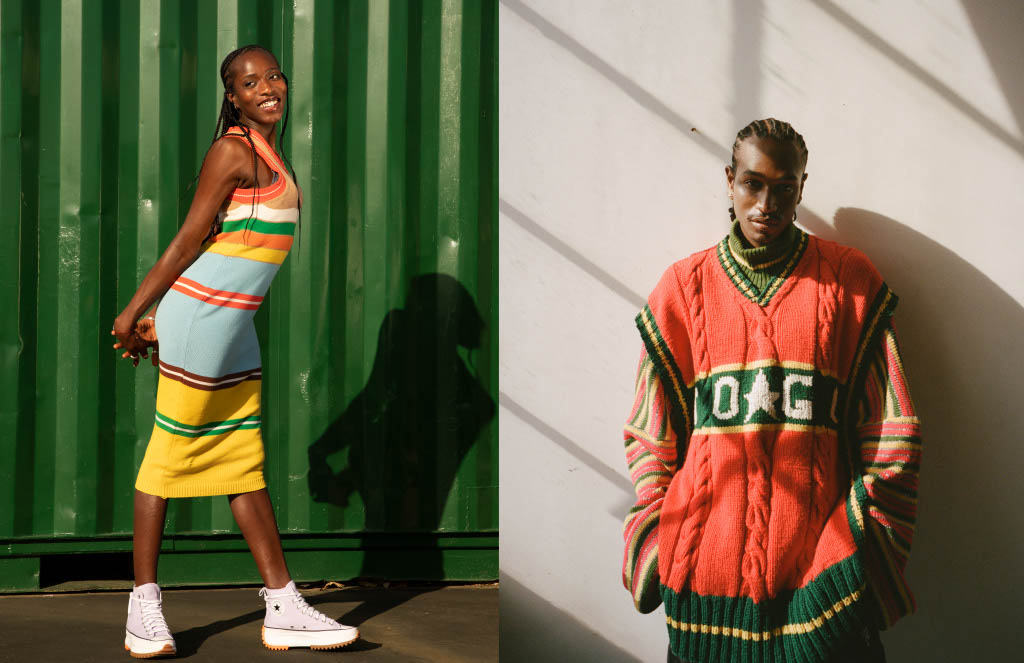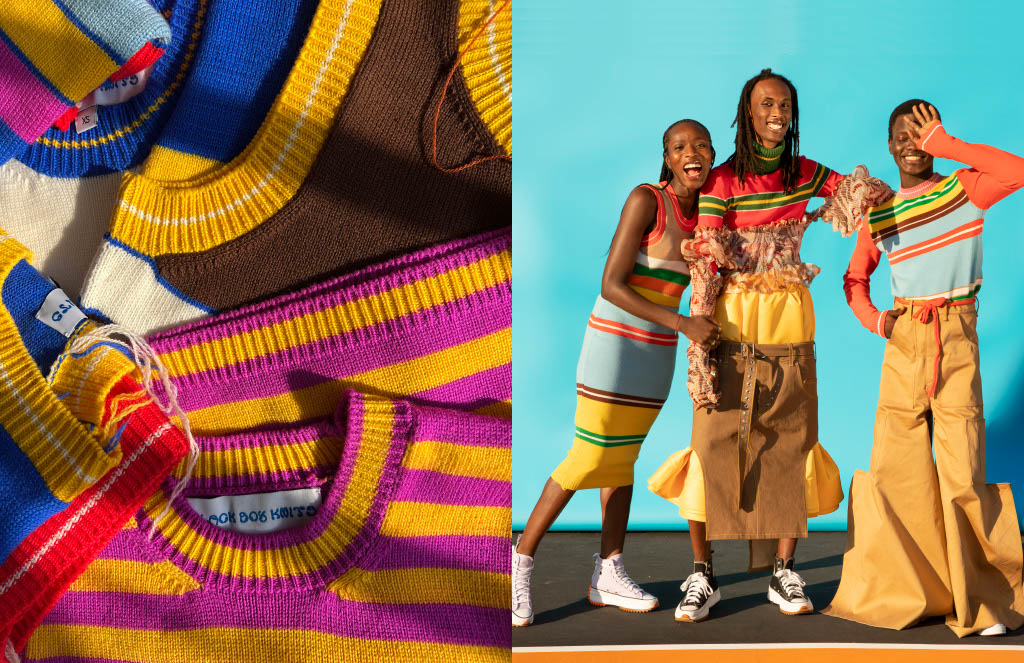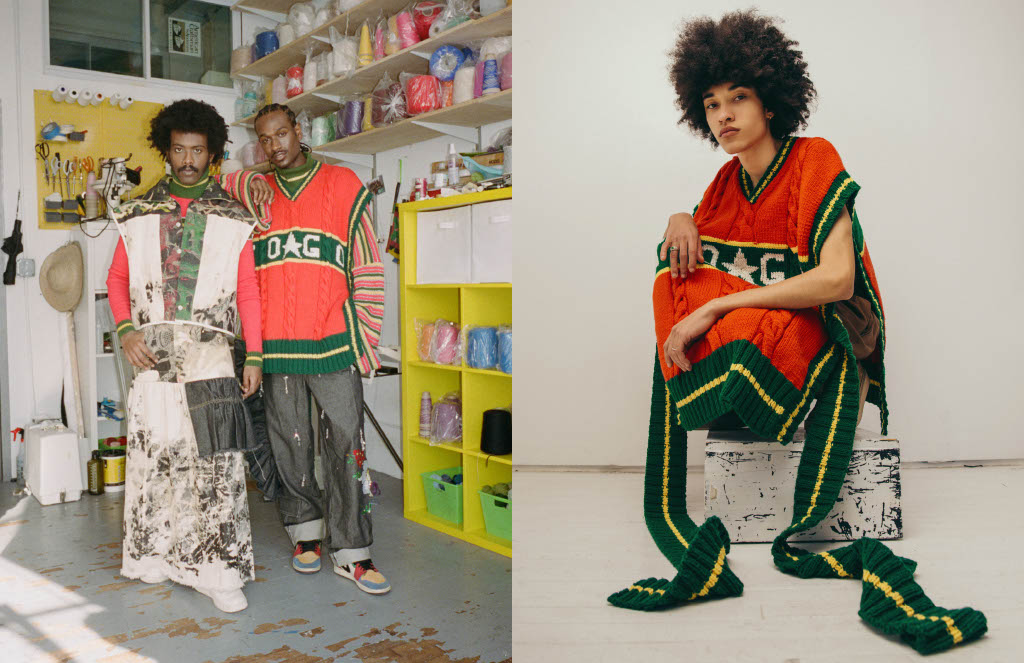After stepping away from fashion, Jacques Agbobly, has elevated Black Boy Knits to new heights. They connected their ancestral spirits of entrepreneurship into every fashion item they knit with bare hands. Agbobly’s use of bright colors not only speaks to the joy they feel from customers, but also to the loud voice they have created for individuals who have not embraced their unfamiliar beauty features.
How has Black Boy Knits become a love letter to your Togolese ancestors as well as your family in Chicago, Illinois?
When I started ideating Black Boy Knits, it was at a time where I fell out of love with fashion and I really was contemplating my positioning in the fashion world. There were Black students within my immediate community at the school, but there were not a lot of black folks that were in the classes that I was taking. I felt that I had to continually overcompensate for it in a lot of ways in order for my ideas and the vision I wanted to do to be validated
By the end of my education career, I felt very beat down. I did not feel like I belonged in the industry. During the beginning of Covid, I had a chance to step back and think about all the parts of fashion that I really loved. And that was the emotion that I saw when people would wear things; fashion is about connecting people. When you put on something that you feel confident in, that totally changes up who you are. I know that that really brought me back to my first time imagining or seeing fashion happen.
I grew up in Togo, West Africa, where my grandmother rented part of her home to seamstresses and tailors. And while growing up, I would often just sneak under their work tables and just watch in awe as they were creating. What was really interesting about that was not just the pieces but it was the emotions that I would witness when clients would come in and try on pieces that were made custom for them. And that joy was really what I wanted to capture in my work
I am making BBK with my bare hands. I am making all the knits, everything that is on the body, everything that the customers are buying, it is all coming from my hands. And it is my way of connecting to an audience that maybe have been forgotten or have been alienated by the industry just like I was in in many ways. It is really about creating space for the forgotten voices and bringing that joyous aspect back into my work with creating colorful and bright garments.
How have you been able to include photographs and stories from your family into Black Boy Knits?
It always starts with the photos; I started in fine arts. While growing up, I never got to know my mother when she was in Togo because she left when I was very young. When I was three or four, my mother came to move to America and started laying down the seed-work to bring us here.
When I first moved to Chicago, I felt like I was going into a stranger’s home, almost. I had to build a relationship with my mother at nine years old, because I never knew her. In our apartment on the West Side, I used to flip through images; it was the age of photo albums. I came across images of my mom back home in Togo with her sister. I saw the joy that she exuded in those photos. Being able to live in Togo vicariously through her is a huge important part of my work. And my mom is a huge inspiration.
I am always staring at a box of my family images. I am always referencing images whether it is through the specific dress in those photos or the poses, I capture those emotions within my work.
How has your grandmother’s sacrifice to rent half of her living space to tailors and seamstress played a dynamic role in Black Boy Knit development?
I think it is funny, because, I mean, I would not call it a sacrifice. Because my grandmother was an entrepreneur, she was going to get the money. She figured out a way to support her family. I think a sacrifice is different culturally. In Togo, the women stay at home to work. A lot of the women in my family left school early because they had to help raise their brothers and sisters. They never really fully got an education in that realm.
They learned how to do house work so my grandmother was the woman of the house. The house structures in Togo are like compounds. It is the matriarch who’s in the main house with all her children and she rents it out to different people. I would not call it a sacrifice because I feel like culturally, you do for your family what you can in order to live comfortably. For me, when I hear the word sacrifice, it is a little bit more like, ‘oh, we struggle so we need to let go of some things in order to survive.’
I have always felt a strong connection to my lineage and I felt as if I should reference that as a point to create work. Everyone in my family is the same. I would say we all have that entrepreneurial mindset. I was raised by the women in my family and seeing the way that they worked as well as their strength and resilience was very inspirational – as was seeing how human they were as I had to learn that side of myself as well.









